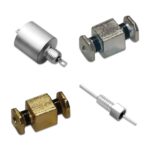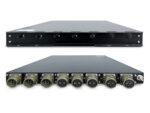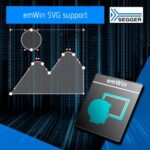Vanguard Electronic announced the expansion of its CMN and SCMN series Common Mode Choke Inductors with the addition of eight new series: CMN4, CMN6, CMN7, CMN9, SCMN4, SCMN6, SCMN7, and SCMN9. These new series are the latest addition to Vanguard’s growing High-Reliability and corresponding Space Grade product lines. The expanded product line of both High […]
Aerospace & Defense
Modeliithics, Knowles to develop RF, mmWave capacitor models
Modelithics welcomes Knowles Precision Devices into the Modelithics Vendor Partner (MVP) Program at the Sponsoring level. Knowles is a leading provider of a wide range of highly engineered capacitors and other components (covering microwave to millimeter-wave frequencies) intended for use in critical applications in military, medical, electric vehicle, industrial, and new energy market segments. Through the Modelithics Vendor…
What are the key design and selection considerations for MIL-SPEC connectors?
MIL-SPEC connectors are designed to operate reliably in challenging conditions and extreme environments. First developed in the 1930s for the US Armed Forces, military standard connectors are now used across multiple industries, from energy and aerospace to maritime and automotive. This article discusses key MIL-SPEC connector design requirements and reviews crucial connector selection criteria. It […]
EMI filters protect circuits in space
Spectrum Control Inc. introduces Space Grade EMI filters that meet the stringent requirements of existing and emerging space technologies. Available in feed-thru, Pi, and L circuits in panel mount and surface mount packages (SMT), the EMI filters deliver high reliability and durability in satellite systems, spacecraft, antenna arrays, launch systems, orbital infrastructure, surveillance and tracking, […]
How can carbon nanotubes improve interconnect performance?
Carbon nanotubes (CNTs) have been proposed for reducing fretting wear in connectors used in high-vibration environments like vehicles. They can also be used to make contacts with lower contact resistance and higher corrosion resistance compared with silver (Ag) plating, and they have been used to reduce the weight in some shielded cables by 25% or […]
Rugged power distribution unit aims to enhance military and industrial power supplies
Acumentrics has introduced a new AC/DC Rugged Power Distribution Unit (PDU) tailored to meet the rigorous demands of military and industrial settings. This latest offering from Acumentrics is engineered to provide reliable power distribution under the challenging conditions typical of these environments. The newly released Rugged PDU by Acumentrics is designed to handle a variety of […]
What quantum sensors can be used as GPS replacements?
There’s a variety of quantum sensors available for use as a global positioning system (GPS) replacement including quantum compasses, atomic gyroscopes, and atom interferometers. Several options for a quantum GPS replacement, also called quantum position sensing (QPS), are being developed. Three examples include quantum active navigation that overlays and supplements existing satellite-based GPS systems, quantum […]
Scalable vector graphics added embedded graphics library
SEGGER introduces support for Scalable Vector Graphics (SVG) in emWin, providing developers with a powerful and efficient solution for rendering scalable and rotatable graphics in embedded applications. SVG is a vector-based image format written in XML. It is an open standard developed by the World Wide Web Consortium (W3C) and is supported by most web […]
Ruggedized USB-C connector withstands harsh mil-aero environments
Amphenol Socapex announces the release of a ruggedized USB Type-C connector, USB3CFTV, based on the MIL-DTL-38999 series III standard. The USB3CFTV is a ruggedized solution designed to withstand harsh environments and demanding applications such as military communications, military planes, aerospace, commercial air, and naval applications. The connector features a Tri start thread coupling mechanism that […]
Modular power EMI filters meet MIL-STD-461
Spectrum Control Inc. introduces a family of modular power EMI filters bringing high performance and design flexibility to a variety of MIL-STD-461 designs with size, weight, power, and cost (SWaP-C) requirements. The chassis mount filters have a wide -55° to 75° C operating temperature. Superior mid- and high-frequency attenuation up to 1 GHz (common mode) is achieved in […]











